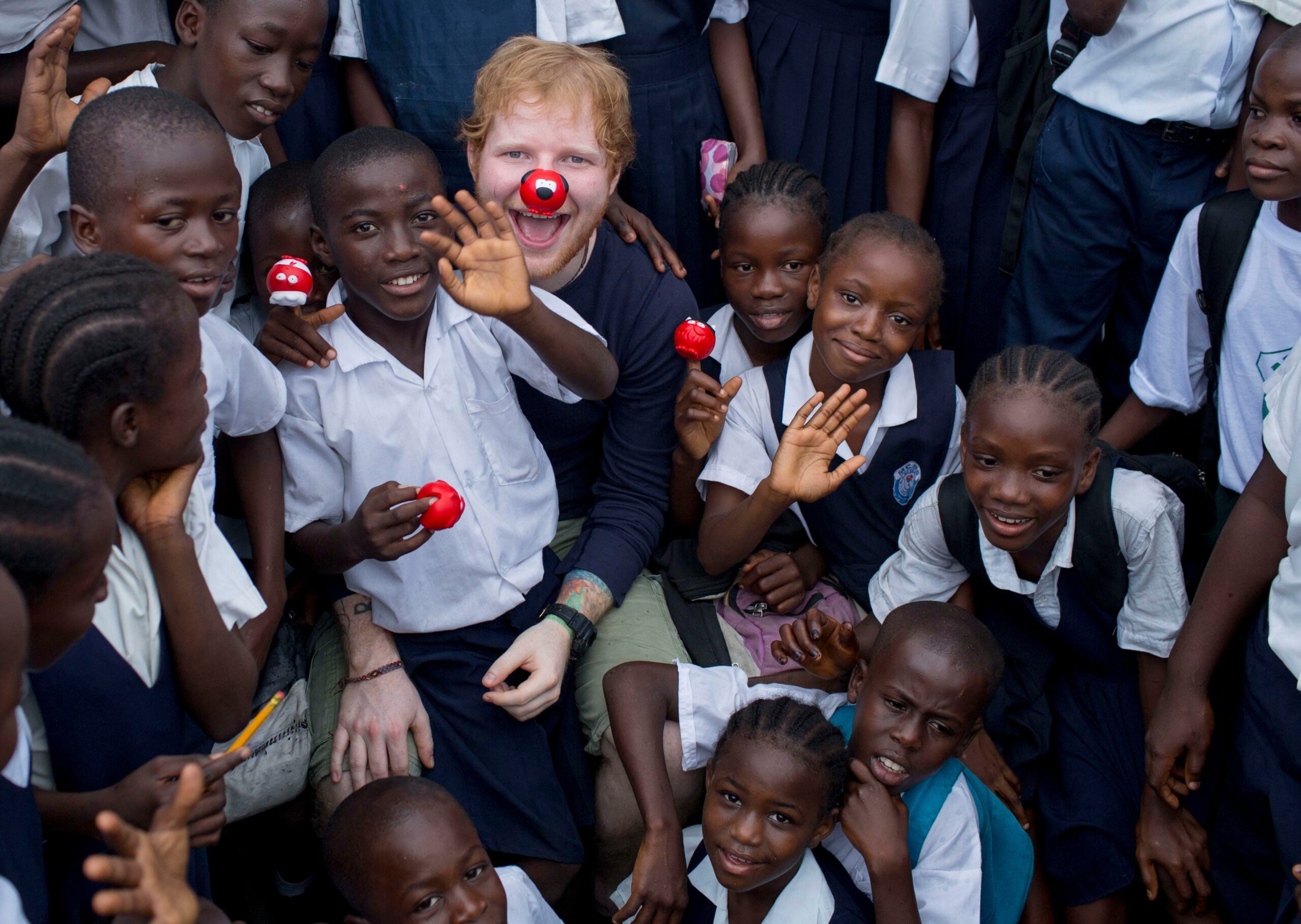During 2020, racism is once again in the spotlight. George Floyd’s death triggered protests all over the world. The Black Lives Matter movement is a sign of societies demanding systematic change. The charity organization Comic Relief has decided that it is time for them to be a part of that systematic change. After previously facing criticism for promoting stereotypes, the organization has now decided to change the way they portray and raise money for Africa.
Comic Relief is one of the most well-known British charity organizations. Founded in 1985 the organization uses comedy to raise money. Celebrities and comedians have regularly participated on Red Nose Day aiming to raise both awareness and money about pressing issues. Nevertheless, the charity has repeatedly been criticized for its harmful portrayal of Africa. One example of this is Ed Sheeran‘s Comic Relief video from 2017 that was shot in Liberia. The video was given a Rusty Radiator award, an award that goes to the “most offensive and stereotypical fundraising video of the year”.
According to one of the founders, David Lammy, the charity’s primetime BBC fundraising events have convinced the British public that Africa is “one homogeneous blob of pain, suffering and starvation” instead of a continent with diverse cultures and nations. At present, Comic Relief has released their plan on how to change their problematic portrayal of the African continent.
The charity will stop sending celebrities to Africa. The new “story-telling guidelines” that set out to improve the image of the charity, focuses on the following:
- “Local film makers will direct all new African films for Red Nose Day 2021: employing local film makers gives viewers a closer, authentic look at the heart of issues directly from affected communities.
- Switching the spotlight: project workers, doctors, teachers, parents and local members of the community will lead their own international stories, giving audiences insight into grassroots level with international appeal films.
- Working with media organizations across Africa: not just on appeal films but also on a range of creative projects outside of appeals by raising awareness of wider narratives across the continent.
- Commitment to a long-term plan: to make every aspect of production, film making and editing behind the camera is more diverse and inclusive.”

The White Savior Complex
White Saviorism, also called the White Savior Complex, describes the phenomenon in which white people tour the world to do good as if the rest of the world has been waiting for help from those who supposedly know better. White Saviorism maintains the idea that people of colour are in need of white people.
Consequences of the Savior Complex include the following:
- Dialogue-based aid and missions risk becoming one authority “helping” the “powerless”.
- It can contribute to a shame-based identity and spread the feeling of helplessness among the targets of the white saviors.
- It can lead to poverty pornography. Humans being objectified, and their condition exploited, for the cause of generating compassion and money. Humans are presented as victims who need help since they cannot help themself.
- It leads to paternalism. Rather than building on, and empowering local capacity, white saviours are doing something “good” for and to others. The white man becomes the hero in his own story losing the perspective on the actual challenges.
- It leads to a simplified, harmful and a misleading portrayal of complex societies and cultures.

White people’s overconfidence in their own ability to help others, whether their services are desired or not, has existed for a long, long time. It is a tradition that dates back to the European expansion made in the name of religion and civilization. The White Savior Complex of today can be described as a modernized version of the poem “The White Man’s Burden” by Rudyard Kipling in 1899.
The poem sees colonialism as the moral burden of the white race. Both in the past and today, the problem is the white “savior” who often puts themself at the centre. Essentially, white people sold the idea of colonialism by creating this concept. A white man was viewed as civilization himself, being brought to the black, brown and asian people around the world who were all “barbarians”. Today, the white savior feels good about themself, gets an attractive resumé and likes on social media.
The issue does not lie with the good intentions of white people. The problem is where these intentions often originate from and how they often are put into action.
The problem is the need white people can have, to be centred as the saviors solving the problems of people of color.
The problem arises when the need for knowledge and competence is replaced with the need to be photographed with the “suffering”. There is no need for saviours but rather, partners. Comic Relief’s decision to shift focus is a sign of self-critical thinking that needs to take part on every level if an end to systemic racism is to be achieved.
Featured image by Comic Relief Ltd

Celina Gleisner
Celina Gleisner is a freelancing journalist, currently finishing her double master's degree in International Public Policy and European Studies.




